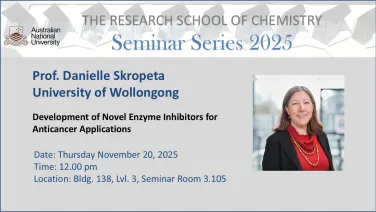RSC School Seminar - Asst. Prof. Colin Smith (Wesleyan University)
Title: Characterizing aberrant energy landscapes in computationally designed and naturally occurring proteins
Speakers
Event series
Content navigation
Description

Characterizing aberrant energy landscapes in computationally designed and naturally occurring proteins
Abstract
Proteins are in constant motion and interconvert between different conformational states. The function of proteins often depends on them folding to very particular structures and avoiding aberrant conformations which may have deleterious or toxic effects. Several projects addressing this critical issue in protein biophysics will be highlighted including work to optimize the function of computationally designed fluorescent proteins and understand the maturation of Amyotrophic Lateral Sclerosis (ALS) related protein SOD1: 1) The recent creation of mini Fluorescence Activating Proteins (mFAPs) capable of binding to and activating the florescence of a small-molecule chromophore is a prime example of the power of de novo protein design. The primary hypothesis for how these proteins function is that they keep the chromophore ligand in a planar conformation long enough to fluoresce. We have developed a computational protocol to predict mFAP rigidity/fluorescence and are developing methods for optimizing rigidity through rational design. We are also using this as a model system to understand how proteins stabilize small molecules in particular conformations, an essential aspect of enzyme catalysis. 2) ALS, otherwise known as Lou Gehrig’s disease, affects approximately 6 people in 100,000 annually. It affects motor neurons, gradually leading to a loss of muscle control and often death. While SOD1 was the earliest protein linked to the disease nearly 30 years ago, the mechanism by which it causes ALS is still unknown. An emerging hypothesis is that non-native interactions involving immature forms of the protein are disease-causing. We are using alchemical free energy simulations to study how several ALS-associated mutations affect SOD1 maturation. This enables the calculation of how mutation perturbs the SOD1 free energy landscape, with the goal of helping to uncover the disease mechanism and eventually develop treatments.
Location
Building 136, Level 3, STB S1

